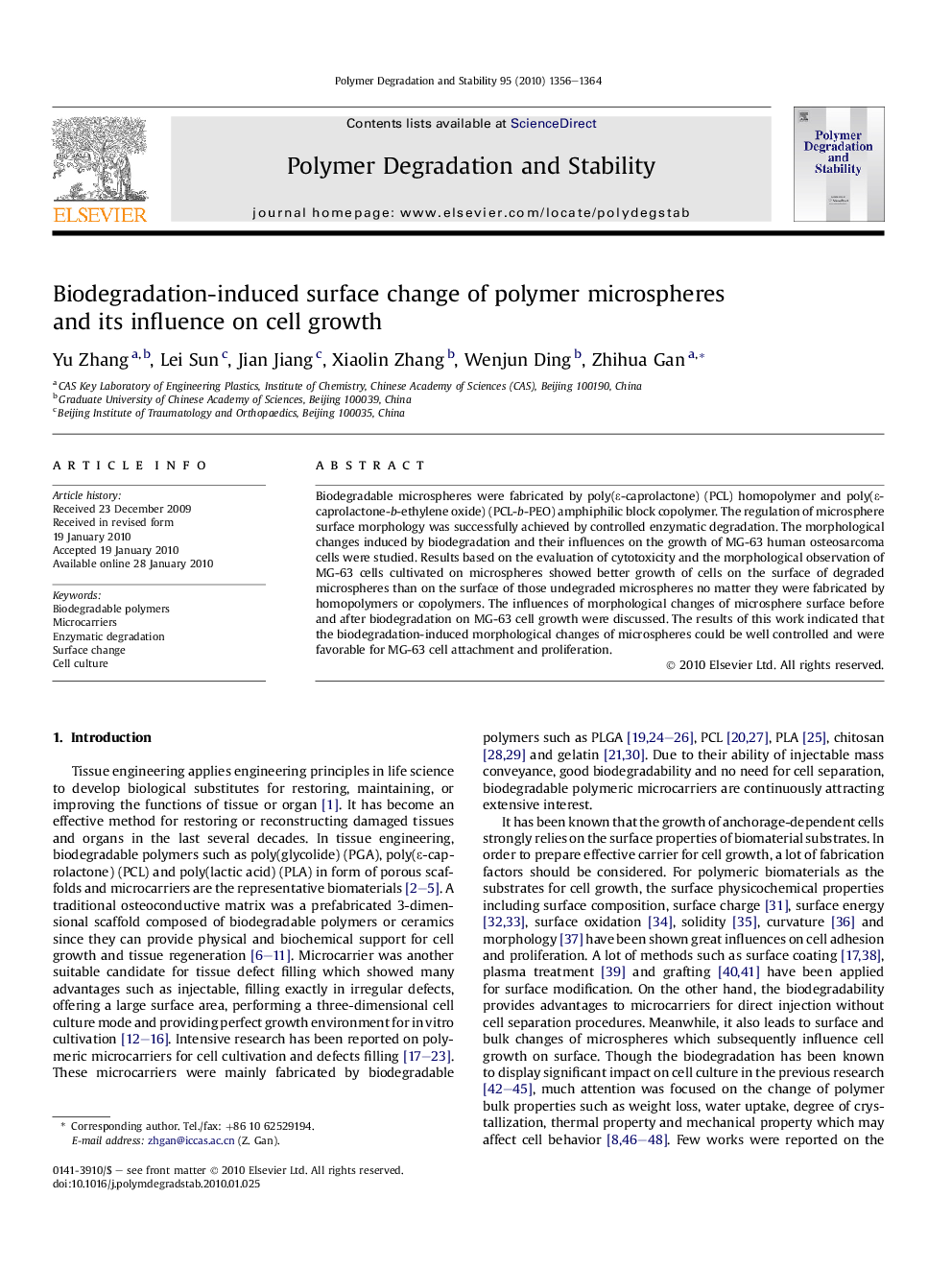| Article ID | Journal | Published Year | Pages | File Type |
|---|---|---|---|---|
| 5203380 | Polymer Degradation and Stability | 2010 | 9 Pages |
Abstract
Biodegradable microspheres were fabricated by poly(É-caprolactone) (PCL) homopolymer and poly(É-caprolactone-b-ethylene oxide) (PCL-b-PEO) amphiphilic block copolymer. The regulation of microsphere surface morphology was successfully achieved by controlled enzymatic degradation. The morphological changes induced by biodegradation and their influences on the growth of MG-63 human osteosarcoma cells were studied. Results based on the evaluation of cytotoxicity and the morphological observation of MG-63 cells cultivated on microspheres showed better growth of cells on the surface of degraded microspheres than on the surface of those undegraded microspheres no matter they were fabricated by homopolymers or copolymers. The influences of morphological changes of microsphere surface before and after biodegradation on MG-63 cell growth were discussed. The results of this work indicated that the biodegradation-induced morphological changes of microspheres could be well controlled and were favorable for MG-63 cell attachment and proliferation.
Related Topics
Physical Sciences and Engineering
Chemistry
Organic Chemistry
Authors
Yu Zhang, Lei Sun, Jian Jiang, Xiaolin Zhang, Wenjun Ding, Zhihua Gan,
